
The gritstone edges of the eastern Peak District are home to a small but significant population of Ring Ouzels, a close relative of the Blackbird, and a summer visitor to the uplands of the UK. The "mountain blackbird" will be a familiar bird, if not by sight then by reputation, to many climbers and walkers, and is perhaps most notably associated with Stanage – though they can be found on many other crags in the area.
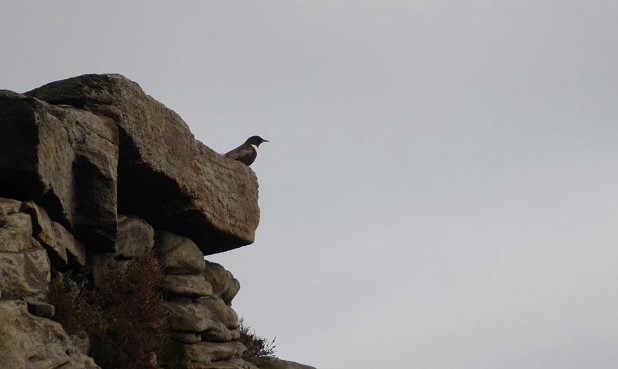
Ring Ouzels are a characterful and striking bird, with a bright white collar (in males, dull brown to white in females) and a silvery sheen to the wings differentiating them from their more familiar cousins. Their primary song is a simple and evocative 3-4 note piping call, though at close range an accompanying complex of warbles and whistles can be heard alongside.
They are an upland specialist species, breeding on moorlands and mountains, rarely below 250m except in the far north. They prefer rocky habitat, with a variety of vegetation types including heather and bracken for nesting cover, short grass areas for foraging on invertebrates and bilberry, rowan and other berry-bearing shrubs for feeding later in the year. They nest in a multitude of locations - on the ground, on crags, on steep-sided stream banks and under boulders, usually hidden within heather, bilberry or bracken.
Ring Ouzels are on the UK "Red List" of birds of conservation concern due to severe breeding population decline, and moderate breeding range decline, over the last 25 years. The most recent census of the UK population was in 2012, which estimated a population of around 6000 pairs – and critically, a decline of 29% since the first census in 1999. By way of comparison, there are around 5 million pairs of Blackbirds in the UK.
The 2012 census estimated around 150 pairs in the Peak District, and a quarter or so of these are found on the Eastern Edges (taken as the area from Cutthroat Bridge in the north, to Baslow in the south, and including, amongst others, the popular crags of Bamford, Stanage, Burbage, Millstone and Curbar).
The Eastern Edges population is notable due to its close association with climbers, and other visitors more generally, and its propensity for choosing some of the busiest crags in the country on which to nest. This has led to concerns about disturbance to breeding ouzels (they are a notified feature of the Eastern Peak District Moors SSSI) and consequent impacts on their conservation status.
The BMC has historically managed climbing restrictions for a number of species of crag-nesting birds across the country. Typically for many of the species involved, such as auks and raptors, birds reliably return to the same ledges to nest year after year, for a single breeding attempt, and restrictions are regular and recurring. Ring Ouzels however typically move nest sites, and may use two or more nests, each year.
This means protecting their nests each year can be a complex affair, and over the past 20 years a system of locating and signing nests has been developed which enables the birds to breed successfully and climbers and walkers to enjoy their presence at remarkably close quarters.
The earliest reference I have found to a Ring Ouzel climbing restriction was one on Hen Cloud in 1997. This was highlighted in an article by Jamie Fisher, who had to bypass Central Climb while attempting a "Classic Rock round" by bike that year. Very frustrating I'm sure, but kudos to him for resisting temptation and cycling on past! It is however, primarily at Stanage where the focus has been over the past two decades.
Stanage – A Brief History
In 2000, the Stanage Forum was convened by the Peak District National Park Authority's Matthew Cromey, then Estate Manager of Stanage-North Lees, to enable the various interest groups to develop a shared vision for the estate. Ring Ouzels were a hot topic of the day, alongside parking charges (plus ca change), and there were rumours of possible climbing bans on some (or all!) of the edge.
Some of the names involved will still be familiar to many – Dave Turnbull, then (and again, I think, now!) Access and Conservation Officer at the BMC, and Henry Folkard, long term BMC access volunteer-extraordinaire, to name but two. And of course Bill Gordon – the longstanding Stanage warden of some distinction and perhaps notoriety to those who have chosen to camp unofficially at Stanage over the years.
In 2001, the foot-and-mouth outbreak meant that Stanage was essentially closed for early spring (sound familiar?) and on the first day of reopening a notable count of singing male Ring Ouzels was recorded – bolstering the suggestion that people were negatively impacting ouzel numbers. Surveys in 2002 and 2003 also indicated that, despite plenty of breeding attempts, breeding success was relatively low. Local birders, the RSPB and English Nature were keen that something be done, for obvious reasons.
The debate could be caricatured as conservationists wanting "bans" on climbing, and recreationists wanting unfettered access to the crags – though in reality it was never quite that polarised. The RSPB wanted temporary precautionary (i.e. prior to any birds settling down to breed) restrictions on the areas considered to be the ouzels' favourite sites. The BMC was happy with the principle of restrictions, but argued they should only be enforced once the birds had chosen their spot.
A meeting in 2004 of the Stanage Forum's "Ring Ouzel Technical Group", attempted to find a way forward. This culminated in the BMC, somewhat reluctantly, accepting to advise climbers that year to avoid three areas of the edge thought to be favoured by the ouzels – Count's Buttress, the Strangler area, and part of Apparent North. It successfully argued against restricting Trinity Wall area, due to its extreme popularity. This was somewhat of an experiment, as ouzels do not reliably return to exactly the same nest sites year after year – though occasionally sites are used repeatedly, and some areas are favoured more than others.
It was an experiment which lasted only one year, largely because the ouzels did not play ball – there were only two successful nests on Stanage in 2004, neither of which was in the restricted areas. From the following year, restrictions were only enacted once birds had started nesting, lasting for the duration of the breeding attempt – the BMC's preferred option, and the system which has continued ever since.
This was perhaps only a realistic proposition due to the sterling efforts of Bill and Flo Gordon. Bill is famed and feted (recipient of a British Empire Medal no less) for his love of both Stanage and ouzels. Flo, though less well known, is equally well versed in the art that is Ring Ouzel conservation, and the two of them have spent countless hours, day in, day out, over the course of every spring, locating ouzel territories, signing nest sites and tracking their progress.

Work by Flo and Rebekah Newman, then Estate Manager, brought in a grant from Natural England, and popular "Ring Ouzels Rock!" mugs and t-shirts which, alongside car parking stickers, were part of the all too brief "Stanage…Ours to Care For" initiative, raising money for Ring Ouzel conservation and the estate.
Burbage, Millstone and Beyond
To the south of Stanage, ouzels were generally less numerous and/or less well known, though Bill and Flo often popped over the hill and into the Burbage Valley to keep an eye on pairs there. In fact the Burbage-Millstone-Houndkirk area is home to a Ring Ouzel population at least equivalent to that of Stanage, and together they are, of course, likely to represent one contiguous population - ouzels not being well versed in the intricacies of land management boundaries.
By 2016 the Eastern Moors Partnership (having taken over running the Eastern Moors estate from the National Park Authority in 2011) was in the process of adding the Burbage, Houndkirk and Millstone area to its portfolio, and was thus acquiring responsibility for this significant ouzel population. That year I was contracted by EMP to carry out, alongside Bill, Flo and a number of volunteers, a breeding Ring Ouzel survey of the whole Eastern Edges area – the first time this had been done so completely. At the same time, I also undertook a detailed study of the Burbage area population.
The following year, with the likely retirement of Bill looming on the horizon, and having seen and experienced first-hand the time and effort required to find, sign and monitor all the nests, I set about (thankfully contracted by EMP) recruiting a team of volunteer nest monitors, initially from the BMC Peak Area meeting, then more widely amongst climbers and walkers, and later from Sheffield Bird Study Group.
Four years later, with around a dozen regular volunteers, a core team who are now fully fledged nest finders and around 30 different people having been involved across that time, the project has certainly exceeded my initial aims of "getting a few more people involved in nest monitoring". Bill's successor at Stanage, Mark Anderson, has fortunately also been keen to embrace the world of the ouzel too - though I'm not sure if it was in his official job description!
Ouzelers and Ouzeling
In theory, nest monitoring is the relatively simple task, in method at least, of watching an active nest to check the birds' behaviour and nest's progress. This can be done from a distance, so as not to disturb the birds, and is the primary task of volunteer ouzelers. That is really just the hook though, and the apparent simplicity (in fact waiting, staring, for an hour to catch the brief second a female ouzel slips off the nest can be anything but) belies a more complex story once you look beyond the nest.
The tricky and often time-consuming (though ultimately rewarding!) enterprise of finding the nests in the first place is where the bulk of my time, and increasingly that of many volunteers, is spent during April and May. On some days it can seem almost trivial – an ouzel pops up in front of you, beak full of grass, and darts to the crag revealing her chosen spot. On (many) others it can be a long and confusing series of stake-outs – a glimpse of a bird here, a singing male there – seemingly random movements of individuals teasing you as you try to build up a picture of where each pair is settling down to nest.
Time spent in the field, observing the birds, learning about their habits and reading their behaviour and calls is the key, as with most species, to best understanding them. When it comes to Ring Ouzels, April can be a chaotic time, with early arrivals setting up territories, new birds turning up overnight in flocks and more northerly breeders using the Peak as a stopover before continuing their journey. Untangling this web of activity, however, helps us to have the maximum impact on the birds breeding success.
Given the chance, Ring Ouzels will often attempt two broods in a year, thereby potentially doubling the number of offspring they can produce. Locating early breeding birds as soon as possible gives the best chance of protecting those nests, and maximising the available time for a second brood. With birds nesting on some of the most popular crags in the country, locating and signing a nest early on can easily make the difference between success and failure. The timing of Easter, the May bank holiday and surprise sunny weekends can all factor in to how good a start the ouzels get to their season.
Which brings us to the crux of the project – how this information is all brought together to protect the ouzels and allow us to climb, walk and bike, or just be, amongst them. Wherever possible, we leave the ouzels to get on with their lives in relative peace. This may be in quieter spots, or just spots which are less prone to direct disturbance – and this may still be only a stone's throw from a busy car park, three-star climb or popular picnic spot. If you pay close attention you may spot them!
In other places, and notably where they choose to nest directly in climbing routes, we put signs up to advise either of climbing restrictions, areas to keep out of, or paths to avoid. The ongoing monitoring means the signs are up for the minimum amount of time required, and helps to keep track of the birds if they move on to a second brood.
Each nest and pair is assessed individually as to how and where to sign, if at all. Some pairs seem particularly prone to disturbance, others are incredibly tolerant. Some females will sit tight on eggs even as people walk within feet of them, others will be up and alarm calling at a distance. There is also a balance to be struck – while signs protect from accidental intrusion, they also act as a flag to others, whether that be inquisitive passers-by or bird photographers looking for a close-up shot.
Thankfully, we get very few reports of disturbance, and due to the long-running nature of the project the signs are now very well-known and expected amongst locals and visitors alike. In fact, tip-offs from climbers provide a valuable source of information, and where once fears of overly restrictive climbing bans might have prevailed, the crag is now more happily shared with the birds.
The enthusiasm and dedication of the volunteer ouzelers who have been involved in the project, especially over the last few years, has been fantastic and I have high hopes that the partnership will continue into the future.
The Future
Locally we have seen that the Ring Ouzel population here is stable and even increasing over the past 20 years. However, the productivity rates (the number of chicks fledged per pair) here are not particularly different to other areas of the country where they are monitored, and yet still the national picture over the same period is one of decline. The reasons for this are not fully understood, though one potentially significant factor in other populations has been found to be the "first year survival rate" – the proportion of birds which survive their first winter and return to breed. Taking in the long migration to North Africa, this could of course be due to factors over which we have little ability to directly influence.
We can though at least help to maximise the number of young which can begin that journey, and give them the best possible chance to leave in good condition. As well as the nest monitoring and protection, working to maintain and improve habitat is also important and can take many forms – reducing grazing pressure to allow heather and bilberry to grow, retaining some grazing to provide short grass areas for feeding, planting trees to provide berries (vital for fuelling up in the autumn) and reducing bracken domination to encourage more variety (while retaining some for cover) can all help develop the habitat mosaic which ouzels appear to favour.
In terms of monitoring, I am looking at starting a colour-ringing scheme, which would involve ringing chicks in the nest with individually recognisable colour-ring combinations. Over a number of years this would allow us to determine the return rate of birds each year, and may help shed light on some of the factors affecting the wider decline of Ring Ouzels, such as first year survival rates and migration routes. It would also help us understand how the birds use the local landscape (do Stanage birds return to Stanage? Are birds from some areas more successful than others?) and to protect and monitor nests more effectively.
At a broader scale, climate change has the potential to severely impact the Ring Ouzel population. A typical response of a species to a warming climate may be a shift in either altitude or latitude. As an upland species, there is little room for the Ring Ouzel to move upwards in altitude, especially in the Peak District. Aside from a small, and rapidly diminishing, Dartmoor population, the Peak District is now the southernmost extent of their distribution in England, having disappeared from both Shropshire and Exmoor in recent decades – though whether due to climate, habitat or other factors is unknown.
To finish on a more positive note we do know that, as climbers, walkers, mountain bikers or simply visitors to the Peak District, we can make (and have made!) a positive impact on our local population simply by doing the following:
- Look out for and observe signs at crags during the breeding season.
- If you hear an alarm calling Ring Ouzel (a loud "tac-tac-tac!") move away from the area as soon as possible – then watch from a distance.
- Keep dogs on leads in all areas 1st March – 31st July.
- Report Ring Ouzel sightings at crags, in April and May, either directly to me or via one of the usual annual threads on UKC.
If you want to keep up with the latest Eastern Edges ouzel news, I try to post updates through the season on Twitter @kimleyland.
- ARTICLE: Peregrines in the White Peak 22 Mar, 2021



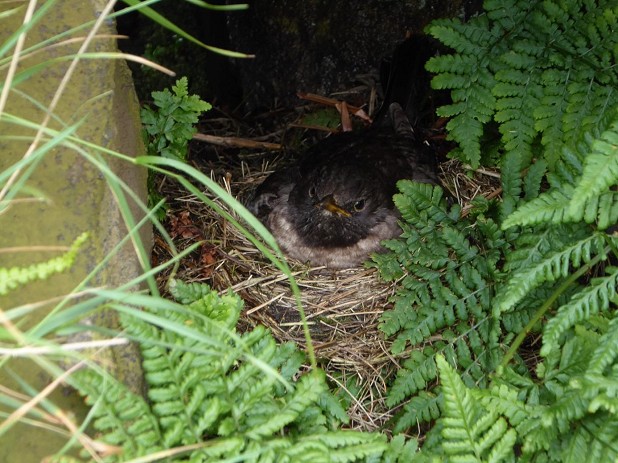
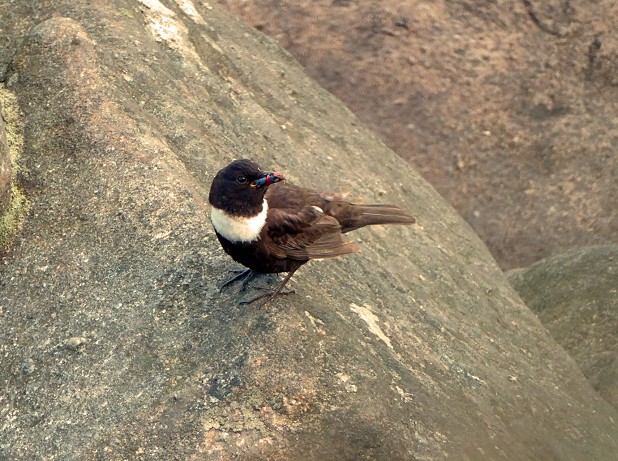
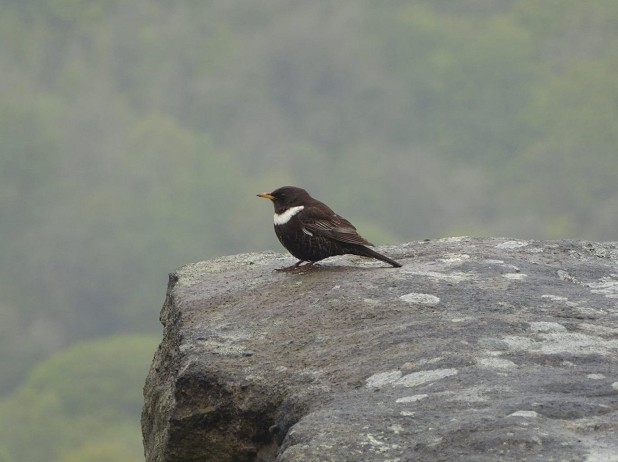
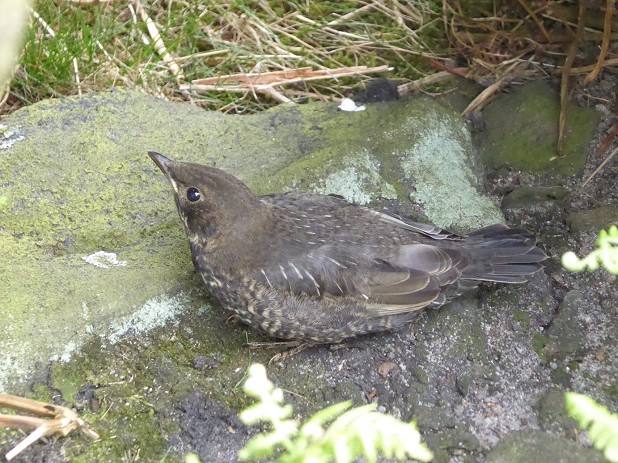
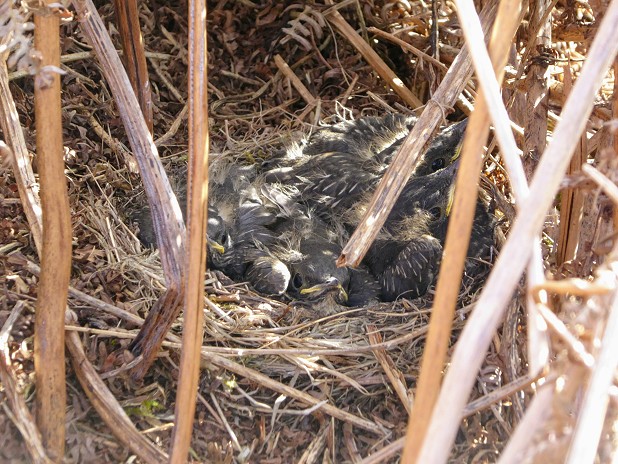

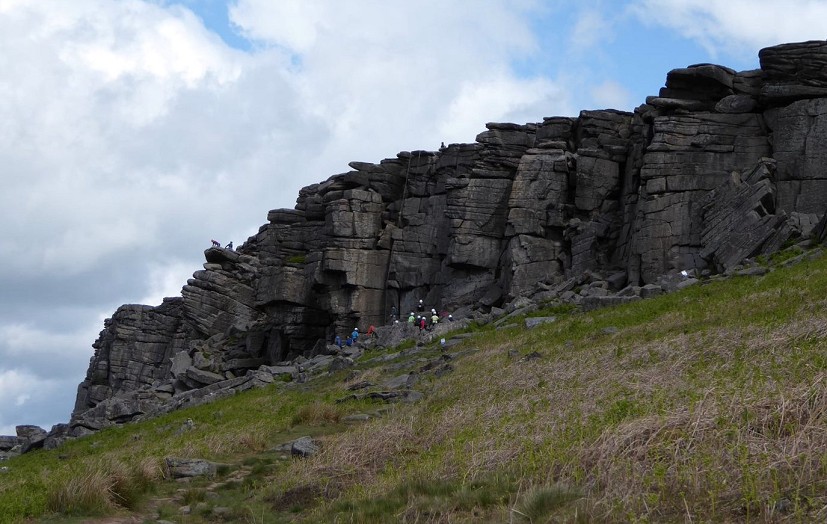
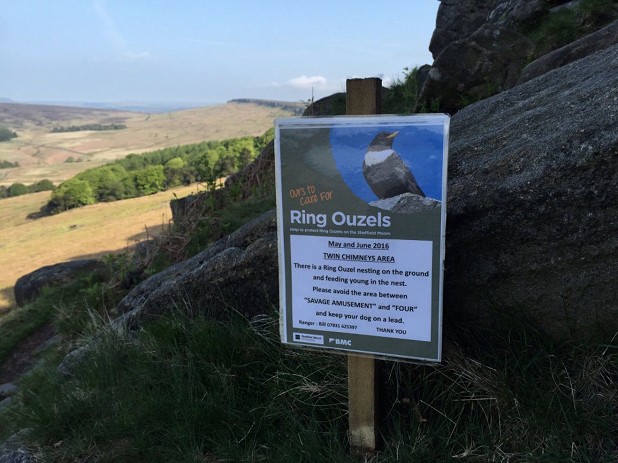
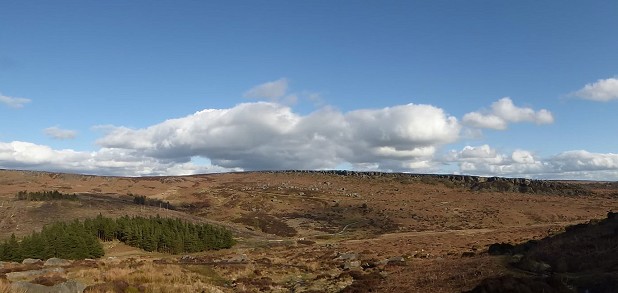
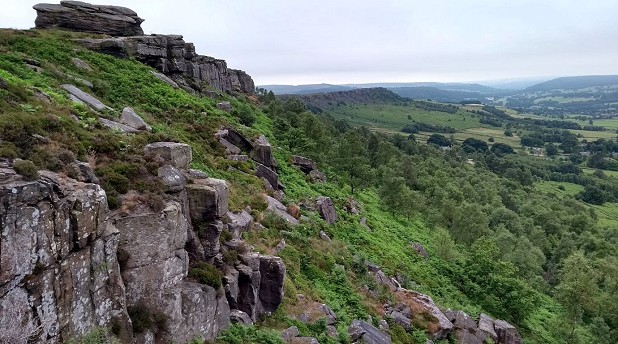
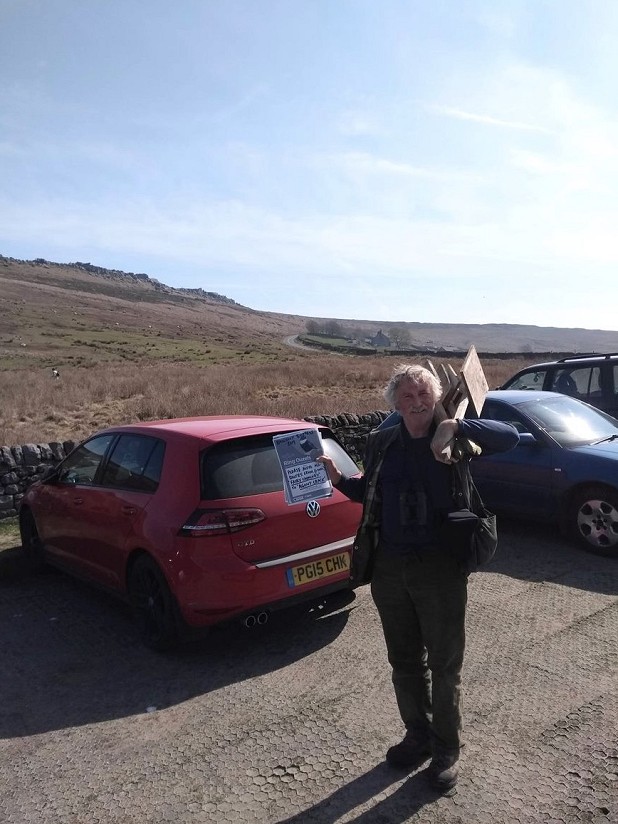
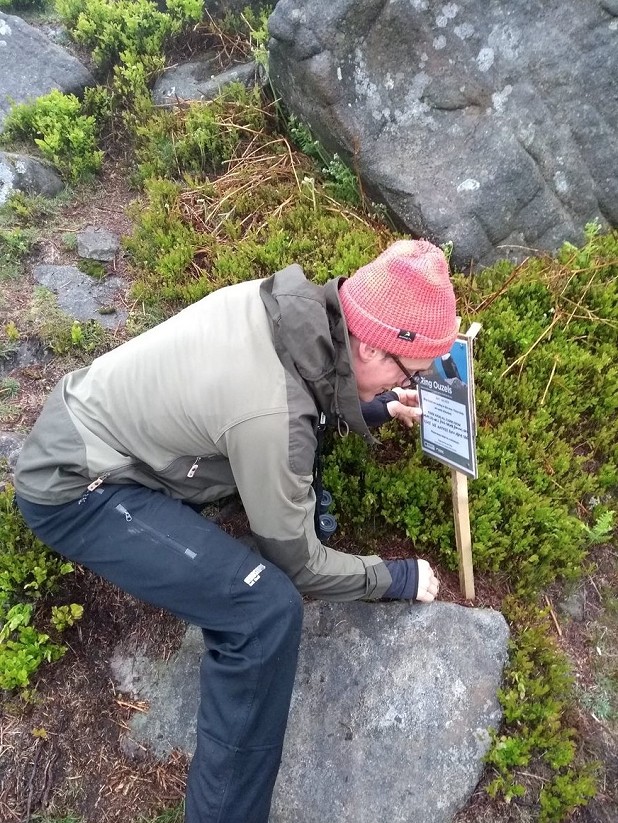

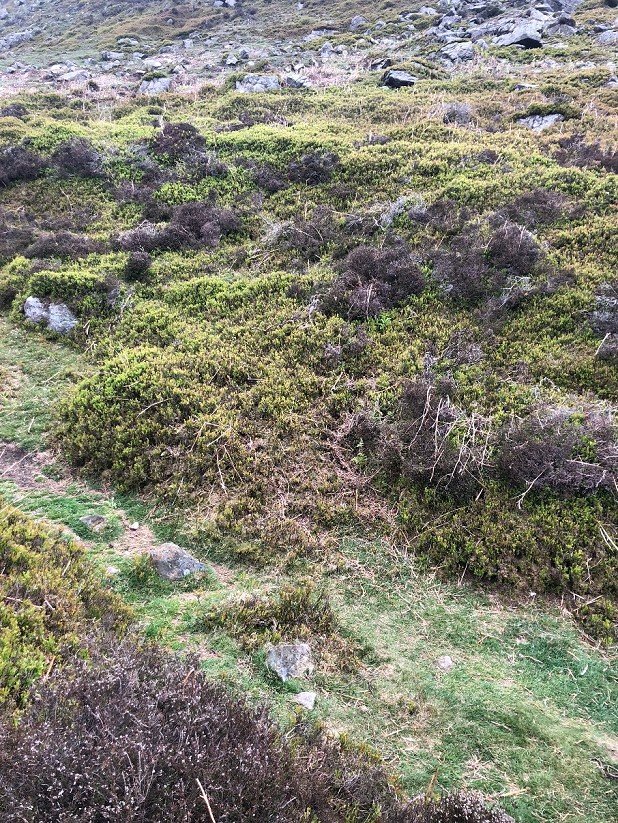

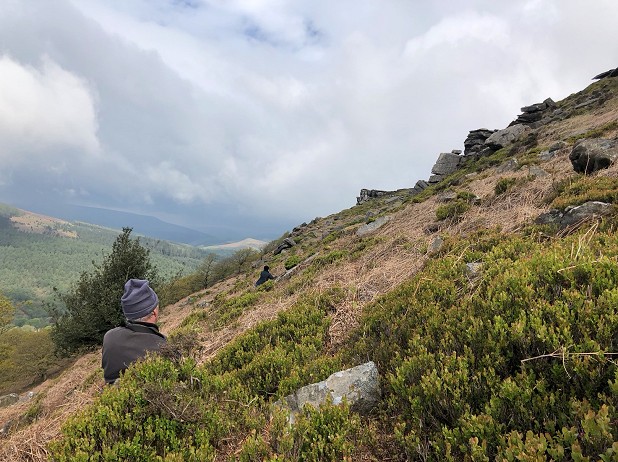
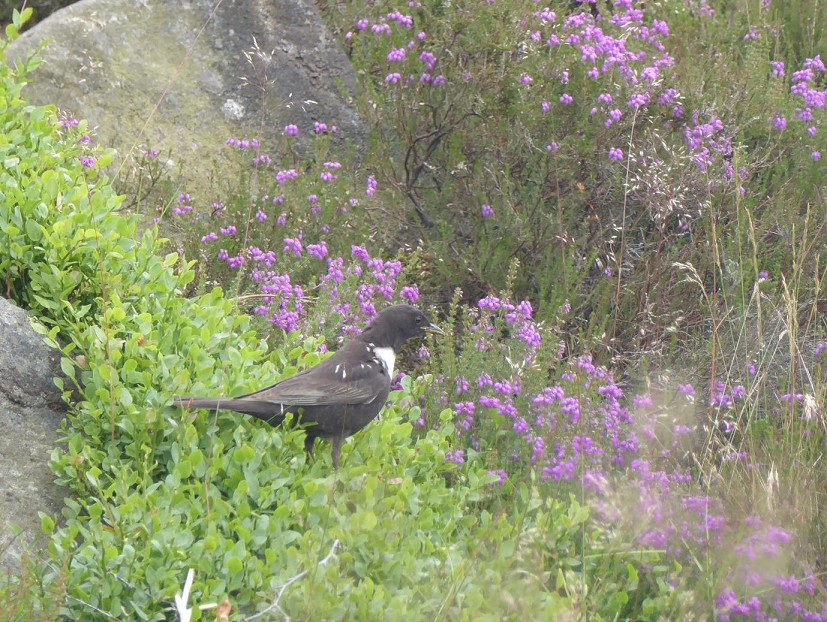

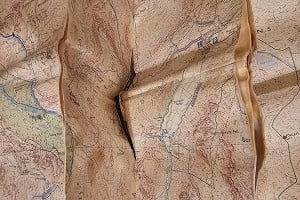
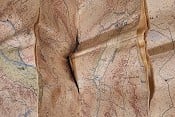


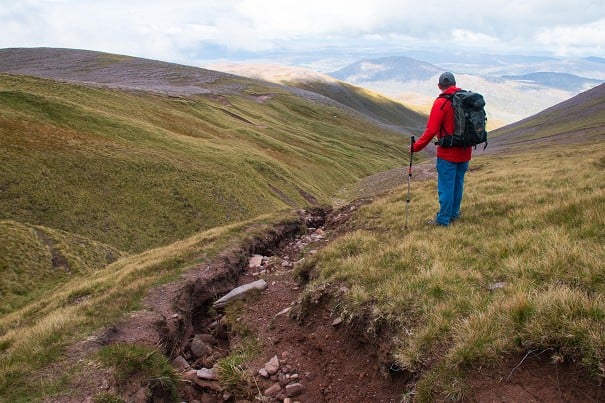




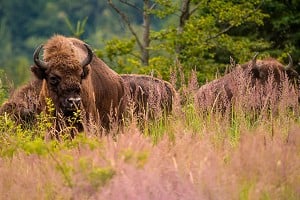


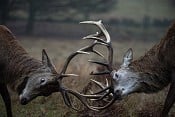
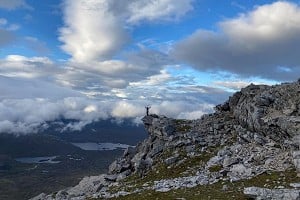

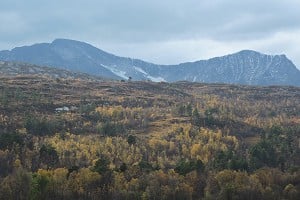

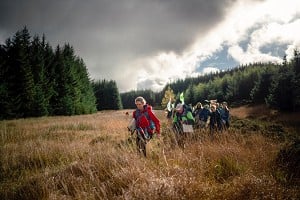
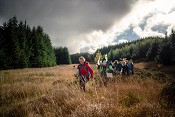
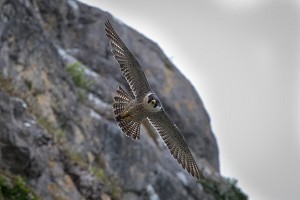





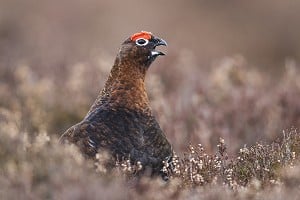
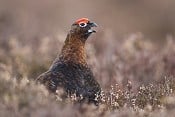


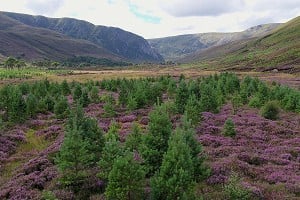

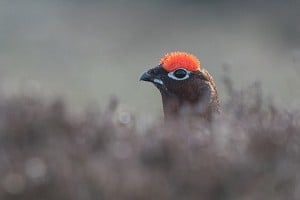
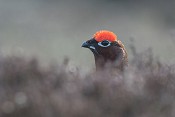




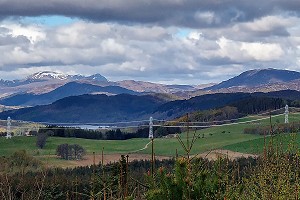
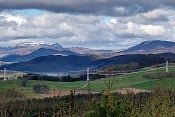

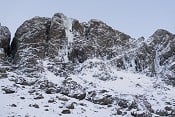




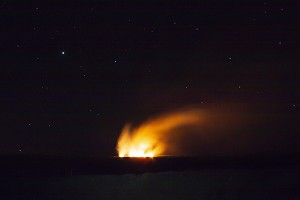




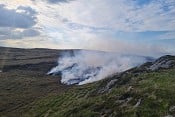
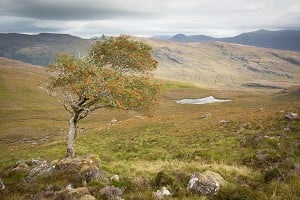
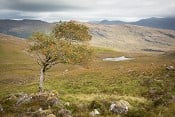


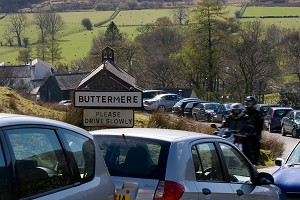
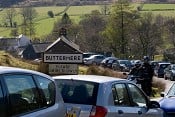
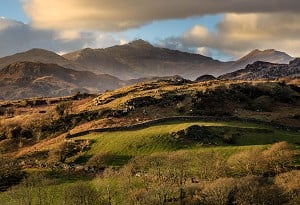
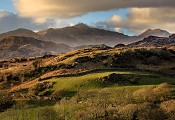
Comments
Not in the Peak, but I was underneath Grasmoor the other weekend, just up from Lanthwaite, when I saw a Ring Ouzel flitting about just above the heather and bilberry. I say I, I happened to be out for a run with someone currently employed to spot Ring Ouzels. Otherwise I wouldn't have had a clue.
I doubt anyone is bothered but the 'Springwatch comes to Stanage' shot it Overhang Buttress on Burbage,
Chris
Lovely article. Never seen one in England but I was lucky enough to watch a pair high up on the grassy slopes just before the path from Glenbrittle Hostel leaves the vegetation to climb up a stony spur of Sgurr na Banachdich 3 or 4 years ago.
They really are fantastic birds and I've always found the privilege of observing them when out climbing them more than compenstates for not being able to climb some areas for a few weeks, so I don't find it unfortunate at all that they choose to nest at Stanage etc :)
Great article and really interesting... thank you.
Living in Sussex we look out for the Ouzels as they migrate over the South Downs and it’s a real pleasure to see them and wish them a good journey...